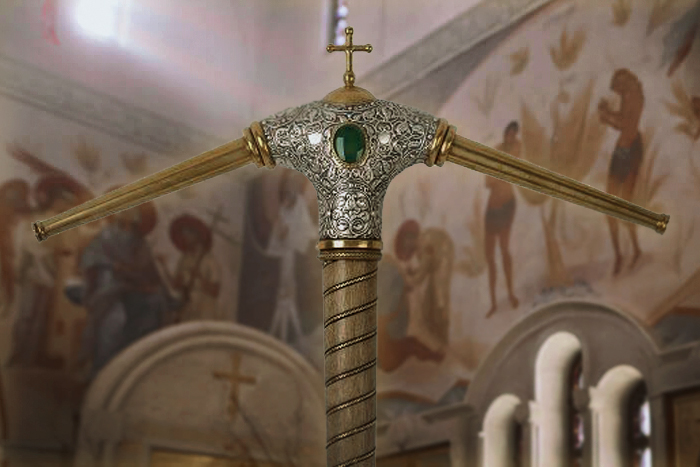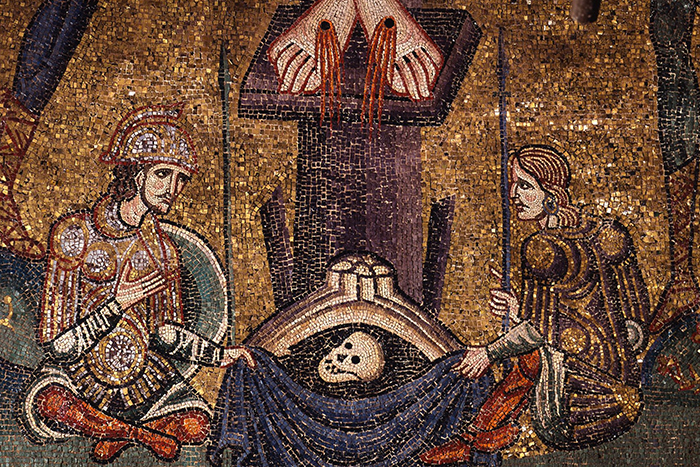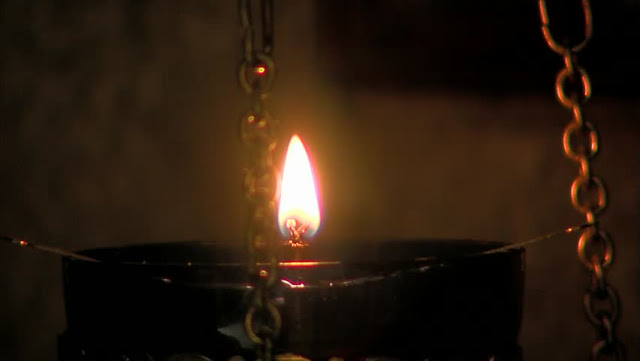
The bishop’s staff is the oldest attribute of the bishop’s authority, which has long been considered a symbol not only of the highest pastoral service in the Church, but also of the teaching and missionary care of the apostolic successors. What is the origin of the bishop’s staff? What Christian truths does it represent?
Origin
The use of the staff goes deep into the history of human civilization, as it was directly linked to the activities of ancient man. Egyptian frescoes already show a picture of Pharaoh with a crooked staff in his hands as a symbol of his dominion over Egypt. Other ancient civilizations also used the staff for religious purposes, such as the ancient Etruscans and the Roman augurs, who carried special wands called litui. However, there is no need to derive bishop’s staffs to ancient pagan examples, because the staff was widely used in Ancient Israel, as evidenced by the Old Testament. It is known that Moses and Aaron had a shepherd’s staff through which God made great signs – Aaron’s staff turned into a serpent before Pharaoh, and also turned the waters of the Nile into blood, while Moses, with the aid of his staff, separated the waters of the Red Sea and let out water from the cliff.

The Lord called Himself the Good Shepherd, which enabled the leaders of Christian communities who performed pastoral ministry to use staffs that looked similar to shepherd’s staffs. For the first time, the use of such staffs was documented in letters from Holy Pope Celestine († 432) to the bishops of Vienne and Narbonne in Gaul. In Spain, the staffs were first mentioned in the decrees of the Fourth Toledo Council in 633, as well as in the works of St. Isidore of Seville († 636). The first clear reference to the granting of a staff to an ordained bishop at a Liturgy in the East is in the Eastern Syriac order of bishop’s ordination (Denzenger, Ritus orientalium, II t., p, 226).
Symbolism
The symbolic interpretation of the bishop’s staff is directly related to the spiritual essence of the archpastoral ministry itself. The traditional interpretation, attributed by some researchers to St. Ambrose of Milan († 397), states that it must be straight to lead believers in the right direction to the Kingdom of God, which influenced the shape of the staff (the pastoral) in the Western Church. The sharp bottom end of the staff symbolizes the authority of the bishop to punish sinners, as well as to protect the flock of God from enemies who want to plunder them. A traditional Western pastoral has a kind of curvature at the top, reminiscent of the ancient shepherd’s crook with a hook at the top, which could easily and safely seize the sheep and steer it in the right direction, and in the spiritual sense – to return a sinner or a lost Christian to the true path. Later, they began making the hooks even more rounded up in the West, with the cross or the image of the Lamb or the scene of a feast in the center.
Staffs with the top in the shape of a Tav cross or a bar with horns similar to an upside-down anchor were popular in the East, because the bishop is the helmsman of the local Church. This shape is traced back to the sixth century. The tradition of depicting two serpents facing the cross at the top of the staff, which first symbolized the wisdom that the archpastors should be distinguished by (be ye therefore wise as serpents. Matthew 10:16), and also pointed to the succession of the New Testament priesthood to the priesthood of Aaron, whose staff had been transformed into a serpent that devoured the serpents of the Egyptian sorcerers, appeared in the 16th-17th centuries first in Greece and then also in Russia. Such staffs also serve as a reminder of the Copper Serpent, as a prototype of the Sacrifice of Christ, whose preachers and ministers the bishops are. The staff highlights the doctrinal authority of the bishop, which is why bishops must preach with the staff in their hands. In the Russian tradition, the staff is equipped with a special double cloth that protects the hand of the bishop from frost and symbolizes the grace that covers up the human weaknesses of the bishop. The rich decoration of the staff with floral ornaments reminds us of the Tree of Life, giving us an insight into the saving power of the Sacraments of the Church performed by the bishop.
At present, the Russian Church distinguishes between liturgical, richly decorated staffs and simpler everyday ones. Apart from bishops, pastoral staffs are also carried by abbots and abbesses of monasteries and convents as a sign of their spiritual authority over the community. During a pontifical service, the staff is solemnly carried out at the Little and Great Entrances by a designated subdeacon. In accordance with Church protocol, only the Patriarch of Moscow can enter the altar of a church with a staff as a symbol of his supreme pastoral authority; the staffs of other bishops remain at the Royal Door near the icon of the Savior during the service.
Therefore, the bishop’s staff is a symbol of wise authority and reminds of a good shepherd, who steers the Church ship and feeds God’s flock. The faithful look at the staff and remember the Good Shepherd Jesus Christ. The enemies of the Church fear it. It props up a Church leader in his difficult ministry.



